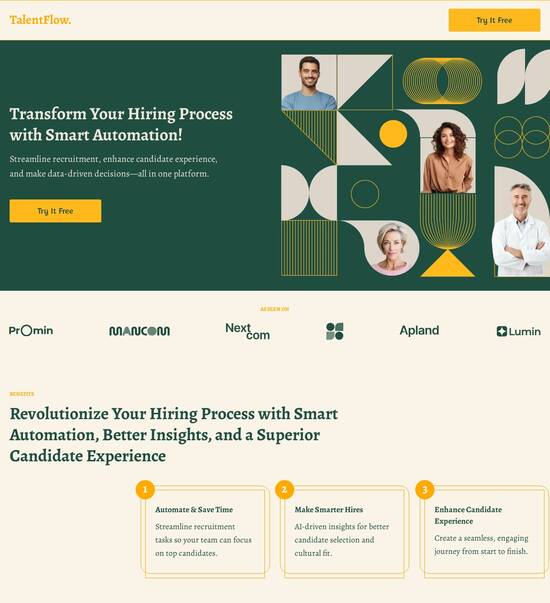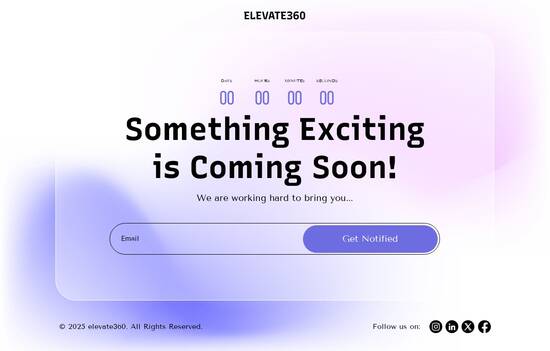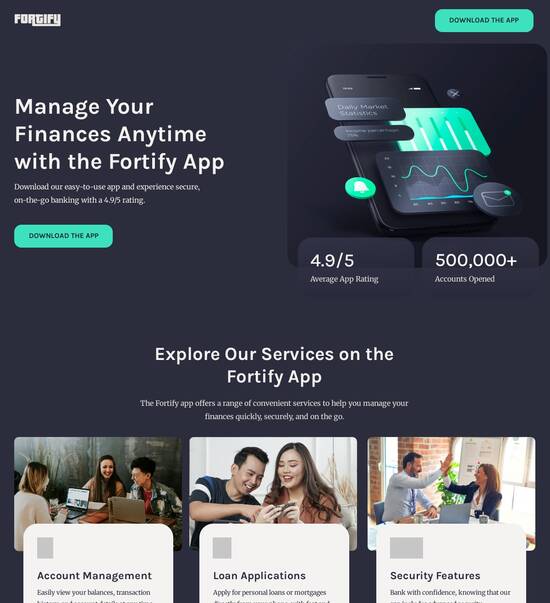
Next.js optimized track your order page template
Explore Similar TemplatesAbout template
Supercharge your track your order page with Next.js for outstanding performance! Learn more today.
Recommended templates

Easy to build without coding
With the intuitive drag-and-drop builder, anyone on your team can create high-converting pages without any knowledge of code or design. Make enhancements to your landing page with custom widgets using Javascript, HTML/CSS, or third-party scripts.

Multiple layouts for any industry and goal
Select from 500+ landing page layouts built to boost conversions across industry-specific scenarios. Customize them by adjusting fonts, adding images, and generating on-brand content with the AI assistant. Quickly scale with Instablocks® and Global Blocks that you can save, reuse, and update globally.

Loads fast and looks polished on any device
Every template is responsive, which means they present professionally on any device and load blazingly fast with our Thor Render Engine. You can also power them up with Google AMP technology to deliver an unparalleled mobile experience and drive higher conversions.

Robust analytics & experimentation
Get real-time updates and reporting across all your devices, showing the number of visitors, conversions, cost-per-visitor, and cost-per-lead. Launch AI-powered experiments, run A/B tests, and use heatmaps to analyze user behavior, then optimize your landing page to maximize conversions.







Easy to build without coding
With the intuitive drag-and-drop builder, anyone on your team can create high-converting pages without any knowledge of code or design. Make enhancements to your landing page with custom widgets using Javascript, HTML/CSS, or third-party scripts.
Multiple layouts for any industry and goal
Select from 500+ landing page layouts built to boost conversions across industry-specific scenarios. Customize them by adjusting fonts, adding images, and generating on-brand content with the AI assistant. Quickly scale with Instablocks® and Global Blocks that you can save, reuse, and update globally.
Loads fast and looks polished on any device
Every template is responsive, which means they present professionally on any device and load blazingly fast with our Thor Render Engine.
Robust analytics & experimentation
Get real-time updates and reporting across all your devices, showing the number of visitors, conversions, cost-per-visitor, and cost-per-lead. Launch AI-powered experiments, run A/B tests, and use heatmaps to analyze user behavior, then optimize your landing page to maximize conversions.
All the features you need to build lead-generating landing pages
Explore more featuresLearn how to build top-performing landing pages for any goal
FAQs
Leading the way in building high-performing landing pages





A step-by-step guide to maximizing ROI with Instapage landing pages
Creating effective landing pages is crucial for digital marketing success, especially in a competitive landscape like the USA. Instapage offers an intuitive platform for designing, optimizing, and converting traffic into leads and customers effortlessly. This guide will help you navigate the process of leveraging Instapage’s powerful capabilities to elevate your marketing campaigns and ultimately maximize your ROI.
Getting started with Instapage
First, sign up for Instapage to access a variety of tools designed for marketers in various verticals such as business services, tech/SaaS, and education. Utilize the 100+ templates that are conversion-focused, allowing you to start your campaign rapidly while ensuring compliance with best practices.
- Explore template options: Choose from a range of templates tailored for different campaign types, ensuring they fit your marketing objectives.
- Utilize lead generation elements: Pre-built forms and other lead capture tools are available to enhance your pages and improve conversion rates.
- Familiarize with the page builder: Experience the drag-and-drop functionality that allows for effortless customization of pages without any coding.
Enhancing your landing pages for better conversion
The next step involves optimizing your landing pages to enhance conversion rates. Use Instapage's built-in experimentation features to analyze user behavior and make data-driven adjustments.
- A/B testing: Create multiple versions of your landing page to test different headlines, images, or call-to-action buttons, and analyze performance to determine the best options.
- Heatmap analysis: Understand where users click and how they interact with your page by utilizing detailed heatmaps, which can inform layout adjustments.
- Analytics dashboards: Track key metrics such as traffic sources, conversion rates, and bounce rates to refine your strategies continuously.
Personalizing the user experience
Personalization is essential for catering to diverse audience segments. Instapage allows you to create dynamic content that resonates with specific user needs.
- Dynamic text replacement: Automatically adjust text on landing pages based on ads users click, providing a seamless experience.
- AdMaps: Align your ad campaigns with specific landing pages to ensure consistency and relevance, boosting user engagement.
- Audience metrics tracking: Use data tools to segment and target your audience effectively, ensuring tailored messaging for improved results.
Following these steps ensures you utilize Instapage's full potential, fostering collaboration among your marketing team members and external stakeholders.
With the knowledge gained from this guide, you’re empowered to create high-performing landing pages that capture leads and drive significant results.
Ready to elevate your digital marketing strategy? Start your Instapage journey today and unlock the tools you need to maximize ROI.
Next.js optimized track your order page template
Understanding the importance of an order tracking page
An order tracking page holds significant weight in the e-commerce landscape. Customers increasingly demand transparency about their purchases, and a well-designed tracking page is a crucial fulfillment of that demand. When users can see where their orders are and when to expect delivery, it fosters a sense of trust and reliability. This trust is vital, especially given the competitive market where numerous online shops vie for consumer attention.
Statistics reveal that customers who are provided with effective tracking options exhibit higher levels of satisfaction. For instance, a study indicates that around 75% of online shoppers feel more confident in a brand that offers accurate tracking info. Additionally, sites that optimize their order tracking pages see a notable dip in customer service inquiries regarding order statuses, further enhancing operational efficiency.
Increased customer trust and confidence.
Reduction in customer service inquiries regarding order status.
Better customer satisfaction through real-time updates.
Key features of the Next.js order tracking template
The success of a tracking page largely hinges on its features. A key component of the Next.js optimized order tracking template is the seamless integration of user data. By leveraging APIs, businesses can personalize the tracking experience based on prior interactions. This means a customer will see relevant information about their order, such as personalized delivery updates and tailored recommendations for products they might need next.
Real-time order tracking capabilities are essential in today's e-commerce environment. Customers expect instant updates about their orders, which involves technologies like WebSockets or Server-Sent Events (SSE). These technologies ensure that the user dashboard reflects the latest status of their orders, providing complete transparency. Moreover, integrating geolocation features can significantly enhance the user experience in tracking packages, making it easier for customers to understand the shipping process based on their location.
User data integration for personalized tracking.
Real-time updates through WebSockets or SSE.
Location-based tracking for enhanced user experience.
Navigating the development of the track your order page
When it comes to developing a track your order page, choosing the right tech stack is fundamental. Next.js is particularly beneficial for building such pages due to its server-side rendering capabilities and optimized performance. Utilizing additional technologies like RESTful APIs or GraphQL for data fetching can enhance the efficiency of your development process. Moreover, choosing the right hosting solution ensures that the tracking page can handle traffic without lag, directly affecting customer satisfaction.
The structure of the template files is also crucial in creating an optimized tracking page. Key files in Next.js, such as API routes for handling order status updates and dynamic pages for user-specific content, streamline the development process. It’s also vital to focus on user experience (UX) design – a clean interface and straightforward layout enhance usability. Employ best practices such as intuitive navigation, balanced typography, and appealing color schemes to foster user engagement.
Next.js for server-side rendering and performance.
Leveraging RESTful APIs or GraphQL for data updates.
Prioritizing user experience through effective UI/UX design.
Engaging with your users through interactive content
To keep users engaged, consider incorporating appealing previews within your order tracking page. Visual representation of order details can draw the user’s attention, ensuring they remain invested in the tracking process. Engaging previews might include images of the products en route or interactive maps that visualize shipping routes. Utilizing concise descriptions and clear visuals can significantly enhance the user's experience.
Building communities around feedback regarding order experiences can also boost engagement. Encourage customers to share their delivery experiences through social interactions or customer reviews on the track your order page. Develop community features that allow users to discuss and provide insights about order statuses or delivery challenges. This kind of interaction not only builds a community feel but also provides valuable insights for your business.
Incorporating visuals like maps or images for better engagement.
Encouraging customer reviews and feedback.
Creating community features to connect users.
Collaborative development: working with teams and collectives
Involving diverse teams in the template creation process can lead to a more robust order tracking page. Each team, from developers to marketers, should contribute insights based on their unique perspectives. An effective strategy is assigning specific roles within the team. Developers can focus on technical structure, while marketers emphasize the content and user engagement features. This collaborative approach can ensure that all aspects of the page cater to a high standard of performance and user satisfaction.
Leveraging developer communities can also enhance your project's quality. Engaging with other professionals provides opportunities to learn best practices, uncover innovative solutions, and share templates. Participate in forums or social media groups tailored to Next.js developers. Collaboration can lead to insight-driven refinements and fresh perspectives on order tracking features, making the tracking page more effective.
Fostering collaboration through role assignments.
Engaging in developer communities for insights.
Sharing knowledge and resources to enhance features.
Addressing common questions about order tracking pages
Frequently asked questions often arise about order tracking pages, particularly regarding user access and real-time updates. To enhance the user interface, anticipate questions and integrate helpful information where users typically seek clarification. For example, including hover-over text that explains tracking terminology or status updates can improve understanding. Additionally, an FAQ section can address common inquiries around delivery times, changes, and how tracking updates are communicated.
Troubleshooting access issues is another essential aspect. Common problems include login difficulties and users not receiving timely updates. It's important to provide thorough user guidance. Consider implementing a dedicated helpline or chatbot feature to assist users encountering challenges. Providing clear troubleshooting steps can not only resolve issues but also build trust between the brand and its customers.
Providing helpful FAQ sections for user questions.
Offering troubleshooting guidance for access issues.
Implementing real-time support features like chatbots.
Future trends in order tracking technologies
Upcoming innovations are set to transform order tracking technologies significantly. These changes could include AI-driven insights that predict delivery windows based on historical data. Leveraging AI can not only enhance the accuracy of delivery estimates but also provide personalized recommendations based on user behavior. Emphasizing forward-thinking approaches is critical as customer expectations evolve rapidly.
Adapting to these changes is just as vital. Continuous engagement with user feedback will offer insights into what features to enhance or develop further. Being proactive in implementing new technologies, such as augmented reality for tracking visualizations, can set a brand apart in a crowded marketplace. Staying ahead of customer needs ensures that your order tracking experience remains relevant and effective.
Innovation in predictive analytics with AI.
Utilizing augmented reality for enhanced tracking visualizations.
Continuously adapting based on user feedback.
Conclusion: embracing the future of e-commerce with Next.js
The Next.js optimized track your order page template stands out as an essential tool for businesses aiming to optimize customer experience. With features that ensure transparency, real-time updates, and user engagement, it effectively caters to the modern consumer's needs. By embracing innovative technologies and focusing on collaboration during development, brands can create tracking pages that resonate with customers.
Investing in effective order tracking is more than just a technical upgrade; it's a strategic move towards building customer loyalty. Platforms like Next.js empower marketing and development teams to innovate their e-commerce strategies continuously. By enhancing the order tracking experience, businesses can foster brand trust, thereby ensuring sustainable growth and customer satisfaction.
Optimize customer experience through transparency.
Foster loyalty through engaging tracking features.
Continually adapt and innovate based on customer input.
Ready to skyrocket conversions?
Supercharge your ad campaigns with high-performing landing pages
Get started














